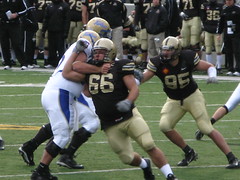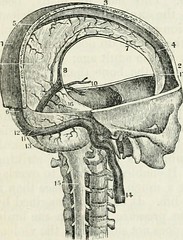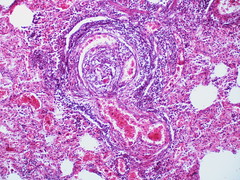AP US History Period 4, AP US History - Period 3 (1754 - 1800) Flashcards
AMSCO United States History 2015 Edition, Period 4: 1800 - 1848 Chapter 7 - 11
| 12172120417 | Second Great Awakenings | Religious movement that began in the early decades of the 19th century. Reaction against the rationalism of the Enlightenment. In the northern states it touched off social reform. |  | 0 |
| 12172120498 | market revolution | Starting in the early 19th century, produced vast economic growth, mass produced goods. |  | 1 |
| 12172120499 | Thomas Jefferson | Washington's first secretary of state. A Democrat-Republican, he was the nation's third president from 1801 to 1809. |  | 2 |
| 12172120500 | Battle of New Orleans | General Andrew Jackson won this in 1815. The War of 1812 had officially ended two weeks earlier, but word had not yet reached the United States. |  | 3 |
| 12172120501 | Era of Good Feelings | Term to describe James Monroe's period as president (1817-1825). The Democratic-Republicans party dominated politics. |  | 4 |
| 12172120418 | Jacksonian Democracy | The time period 1829 to 1837, also known as the Age of the Common Man. |  | 5 |
| 12172120502 | Indian Removal Act | President Andrew Jackson supported this. By 1835 most of the eastern tribes had reluctantly moved to an area in today's Oklahoma. |  | 6 |
| 12172120503 | Romanticism in art and literature | Evoked the wonder of the nation's landscape. The Hudson River School of painters were the most prominent. |  | 7 |
| 12172120504 | Nullification Crisis | In 1832, South Carolina passed a resolution forbidding the collection of tariffs in the state. Jackson threatened use of federal troops against South Carolina. |  | 8 |
| 12172120505 | Elizabeth Cady Stanton | A women's rights reformer who was not allowed to speak at an antislavery convention. |  | 9 |
| 12172120506 | cotton gin | This machine was invented by Eli Whitney in 1793. It removed seeds from plant fibers. |  | 10 |
| 12172120507 | War Hawks | Led by Henry Clay and John C. Calhoun; argued that war with Britain was the only way to defend American honor, gain Canada, and destroy American Indian resistance on the frontier. | 11 | |
| 12172120419 | William Lloyd Garrison | Advocated the immediate emancipation of slaves without compensation to their owners. He was also the writer of the "Liberator." | 12 | |
| 12172120420 | Lucretia Mott | Early feminist who advocated for women's rights and against slavery. | 13 | |
| 12172120508 | Republican Motherhood/Cult of Domesticity | After industrialization occurred women became the moral leaders in the home and educators of children. Men were responsible for economic and political affairs. |  | 14 |
| 12172120421 | Sectionalism: The North | Largely urban population that worked in factories. | 15 | |
| 12172120422 | Sectionalism: The South | Largely agricultural, mostly cotton from 1830-1850. | 16 | |
| 12172120423 | Sectionalism: The West | Largely trapping and hunting, citizens lived a secluded life away from others. | 17 | |
| 12172120424 | Democratic-Republicans | Favored the common man, weak central government, hated the National Bank, was pro-immigration, wanted slow and cautious westward expansion. | 18 | |
| 12172120425 | Federalists | Favored the wealthy and educated, strong central government, supported the National Bank, limited immigration, slow/against westward expansion. | 19 | |
| 12172120426 | National Republicans | Favored the wealthy and educated, strong central government, supported the National Bank, favored internal improvements. | 20 | |
| 12172120427 | Whigs | Favored the wealthy and educated, strong central government, supported the National Bank and Internal Improvements, limited immigration, slow/against westward expansion; above all else HATED Andrew Jackson. | 21 | |
| 12172120428 | Impressment | Practice of the British navy of stealing Americans and forcing them into service in the British Navy. | 22 | |
| 12172120429 | Treaty of Ghent | Ended the War of 1812, establish status quo antebellum. | 23 | |
| 12172120430 | Oliver Hazard Perry | "We have met the enemy, and they are ours." Battle of Lake Erie. | 24 | |
| 12172120431 | Frances Scott Key | Wrote the Star Spangled banner at the Battle of Fort McHenry. | 25 | |
| 12172120509 | Monroe Doctrine | Warning European powers to refrain from seeking any new territories in the Americas. |  | 26 |
| 12172120510 | Missouri Compromise | An 1820 compromise crafted by Henry Clay; prohibited slavery in the rest of the Louisiana Territory north of latitude 36 30. |  | 27 |
| 12172120432 | King Andrew | Nickname given to President Andrew Jackson when his opponents did not like his use of the veto power. |  | 28 |
| 12172120511 | Nat Turner Rebellion | In 1831, this Virginia slave led a revolt in which 55 whites were killed. In retaliation, whites killed hundreds of African American and put down the revolt. |  | 29 |
| 12172120433 | Marbury v. Madison | Established the Supreme Court's policy of judicial review. |  | 30 |
| 12172120512 | American System | Henry Clay proposed this to advance the nation's economy. It consisted of: * Protective Tariffs: * National Bank * Internal Improvements |  | 31 |
| 12172120513 | The Lowell Mill Factory | The system that recruited young farm women to work in the textile mills. They were housed in company dormitories near the mills. |  | 32 |
| 12172120514 | Seneca Falls Convention | In 1848 women's rights movement wrote a "Declaration of Sentiments", which declared all men and women equal and listed grievances. |  | 33 |
| 12172120515 | Transcendentalists | They questioned the doctrines of established churches and business practices of the merchant class. Mystical and intuitive way of thinking to discover inner self and look for essence of God in nature. | 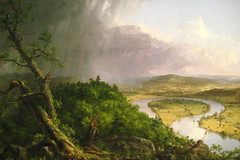 | 34 |
| 12172120516 | Trail of Tears | In 1838 the U.S. Army forced 15,000 Cherokees to leave Georgia and move to Oklahoma. 4,000 Cherokees died on the march. |  | 35 |
| 12172120517 | Hartford Convention (1814) | A meeting was held due to opposition to the the War of 1812; some radical Federalist in the Northeast want to secede from the United States, but that it was rejected. |  | 36 |
| 12172120434 | Panic 1837 | Was a result of Jackson's defeat of the National Bank. | 37 | |
| 12172120435 | Martin Van Buren | Became President after Andrew Jackson, won the election because of Jackson's popularity. Was faced with economic troubles. | 38 | |
| 12172120436 | Tippecanoe and Tyler Too! | William Henry Harrison's campaign slogan. | 39 | |
| 12172120437 | Tecumseh | He said, "They have pushed us from the seas to the lakes, we can go no further." Advocated fighting Americans to stop westward progression and renew British alliances. | 40 | |
| 12172120438 | The Prophet | Advocated relocation rather than fighting Americans westward progression in order to preserve remnants of Native culture. | 41 | |
| 12172120439 | The Embargo of 1807 | Cut off all US trade with the world, attempting to maintain American neutrality. | 42 | |
| 12172120440 | Macon's Bill no. 2 | Allowed the US to trade with either Great Britain or France depending on who recognized American sovereignty and neutrality first. | 43 | |
| 12172120441 | Adams-Onis Treaty | Grave the United States Florida in exchange for taking on Spain's $5 million debt to American citizens. | 44 | |
| 12172120442 | Old Hickory | Nickname for Andrew Jackson gained from the Battle of New Orleans. |  | 45 |
| 12172120443 | Treaty of 1818 | Granted the United States join occupation of Oregon with Great Britain. | 46 | |
| 12172120444 | Worcester v. Georgia | Supreme Court case regarding Cherokee rights to land in the United States. | 47 | |
| 12172120445 | John Q. Adams | Elected in 1824 as a result of a bargain struck by Henry Clay. | 48 | |
| 12172120446 | The Tariff of 1828 | Increased taxes on imported goods to almost 50%; which positively effected American manufacturing. | 49 | |
| 12172120447 | Force Bill | Permitted Andrew Jackson to organize troops to prevent South Carolina from secession. | 50 | |
| 12172120448 | Increased Voter Turnout | -elimination of landownership, -increased news circulation, -increased education/literacy -changes to candidate selection | 51 | |
| 12172120449 | Henry Clay | Created the Tariff of 1833 to solve the Nullification Crisis, developed the American System, Speaker of the House, Secretary of State under JQA, Whig leaders, leader of the War Hawks. | 52 | |
| 12172120450 | Virginia Dynasty | Thomas Jefferson, James Madison, James Monroe |  | 53 |
| 12172120451 | Results of the War of 1812 | -American Nationalism -War Heroes -Death of the Federalist Party | 54 | |
| 12172120452 | The French and Indian War | 1754-1763 War between French and British in American colonies part of 7 years |  | 55 |
| 12172120453 | The Proclamation of 1763 | Line drawn by British Parliament, colonists not allowed to settle past Appalachian mountains |  | 56 |
| 12172120454 | Stamp Act | 1765 direct tax on a stamp that must be put on paper, office documents, etc. |  | 57 |
| 12172120455 | The Coercive Acts | punitive acts applied to Massachusetts in retaliation for the Boston Tea Party; referred to by colonists as the Intolerable Acts |  | 58 |
| 12172120456 | Common Sense | 1776: a pamphlet written by Thomas Paine that claimed the colonies had a right to be an independent nation |  | 59 |
| 12172120457 | The Declaration Of Independence | 1776 statement, issued by the Second Continental Congress, explaining why the colonies wanted independence from Britain. | 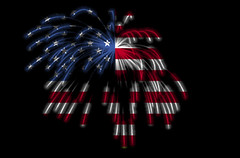 | 60 |
| 12172120458 | Battle of Saratoga | American victory over British troops in 1777 that was a turning point in the American Revolution. |  | 61 |
| 12172120459 | French American Alliance | pact signed by the Americans and the French after the Battle of Saratoga, paving the way for French support of the colonial war for independence and binding the two countries together long-term |  | 62 |
| 12172120460 | Treaty of Paris | 1783 treaty ending the Revolutionary War |  | 63 |
| 12172120461 | Articles of confederation | first government of the United States; extremely weak government that gave most of the power to states |  | 64 |
| 12172120462 | The Northwest Ordinance of 1787 | a law that established a procedure for the admission of new states to the Union and set the boundary for slavery at the Ohio River |  | 65 |
| 12172120463 | Shay's Rebellion | A 1787 rebellion in which ex-Revolutionary War soldiers attempted to prevent foreclosures of farms as a result of high interest rates and taxes |  | 66 |
| 12172120464 | The Constitution | document which spells out the principles by which the US government runs and the fundamental laws that govern society |  | 67 |
| 12172120465 | The Great Compromise | a compromise between the New Jersey and Virginia plans that created the Senate and the House of Representatives; each state received equal number of senators, states received representatives based on population |  | 68 |
| 12172120466 | The Three-Fifths compromise | Agreement at the creation of the Constitution that each slave counted as three-fifths of a person in determining representation in the House for representation and taxation purposes |  | 69 |
| 12172120467 | The Federalists papers | This collection of essays by John Jay, Alexander Hamilton, and James Madison; explained the importance of a strong central government; published to convince New York to ratify the Constitution |  | 70 |
| 12172120468 | Federalists | Supported the ratification of the Constitution and a strong federal government |  | 71 |
| 12172120469 | Anti-federalists | early opponents of the Constitution during the period of ratification; opposed the Constitution's powerful centralized government, arguing that the Constitution gave too much political, economic, and military control |  | 72 |
| 12172120470 | The Bill of rights | First ten amendments to the Constitution, drafted by Madison, created limitations on government and protects natural rights. |  | 73 |
| 12172120471 | Alexander Hamilton | 1789-1795; First Secretary of the Treasury. He advocated creation of a national bank, assumption of state debts by the federal government, and a tariff system to pay off the national debt; strong federalist |  | 74 |
| 12172120472 | Washington's farewell address | He warned against the dangers of political parties and foreign alliances. |  | 75 |
| 12172120473 | XYZ Affair | A 1797 incident in which French officials demanded a bribe from U.S. diplomats | 76 | |
| 12172120474 | Alien and Sedition Acts | Series of four laws enacted in 1798 to reduce the political power of recent immigrants and limit political opposition to the federalists |  | 77 |
| 12172120475 | Kentucky and Virginia Resolutions | Republican documents that argued that the Alien and Sedition Acts were unconstitutional; claimed that states have the authority to nullify federal laws |  | 78 |
| 12172120476 | Enlightenment | A philosophical movement which started in Europe in the 1700's and spread to the colonies. It emphasized reason and the scientific method. Writers of the enlightenment tended to focus on government, ethics, and science, rather than on imagination, emotions, or religion. Many members of the Enlightenment rejected traditional religious beliefs in favor of Deism, which holds that the world is run by natural laws without the direct intervention of God. |  | 79 |
| 12172120477 | John Locke | English philosopher who advocated the idea of a "social contract" in which government powers are derived from the consent of the governed and in which the government serves the people; also said people have natural rights to life, liberty and property. |  | 80 |
| 12172120478 | Ben Franklin | A delegate from Pennsylvania and proposed the "Albany Plan of the Union" as a way to strengthen colonies. | 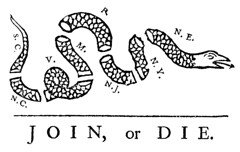 | 81 |
| 12172120479 | Abolition | The movement to make slavery and the slave trade illegal; begun by Quakers in England in the 1780s |  | 82 |
| 12172120480 | representation | A basic principle of traditional democratic theory that describes the relationship between the few leaders and the many followers |  | 83 |
| 12172120481 | Sugar Act of 1764 | An act that raised tax revenue in the colonies for the crown. It also increased the duty on foreign sugar imported from the West Indies. |  | 84 |
| 12172120482 | Quartering Act of 1765 | Act forcing colonists to house and supply British forces in the colonies; created more resentment; seen as assault on liberties. |  | 85 |
| 12172120483 | Declaratory Act | Act passed in 1766 after the repeal of the Stamp Act; stated that Parliament had authority over the the colonies and the right to tax and pass legislation "in all cases whatsoever." |  | 86 |
| 12172120484 | Townshend Acts | A tax that the British Parliament passed in 1767 that was placed on lead, glass, paint, and tea |  | 87 |
| 12172120485 | Thomas Jefferson | Wrote the Declaration of Independence; 3rd President of the United States |  | 88 |
| 12172120486 | Second Continental Congress (1775) | Managed the colonial war effort, and moved incrementally towards independence - finally adopting the Declaration of Independence in 1776. |  | 89 |
| 12172120487 | Sons of Liberty | A radical political organization for colonial independence which formed in 1765 after the passage of the Stamp Act. They incited riots and burned the customs houses where the stamped British paper was kept. After the repeal of the Stamp Act, many of the local chapters formed the Committees of Correspondence which continued to promote opposition to British policies towards the colonies. Leaders included Samuel Adams and Paul Revere. |  | 90 |
| 12172120488 | Patriots | (also known as Revolutionaries, Continentals, Rebels, or American Whigs) were those colonists of the Thirteen Colonies who rejected British rule during the American Revolution and declared the United States of America as an independent nation in July 1776. |  | 91 |
| 12172120489 | Tories/Loyalists | Colonists who favored remaining under British control |  | 92 |
| 12172120490 | Constitutional Convention | A meeting in Philadelphia in 1787 that produced a new constitution |  | 93 |
| 12172120491 | Republican Motherhood | The idea that American women had a special responsibility to cultivate "civic virtue" in their children | 94 | |
| 12172120492 | Pinckney's Treaty (1795) | This treaty between the U.S. and Spain which gave the U.S. the right to transport goods on the Mississippi River and to store goods in the Spanish port of New Orleans | 95 | |
| 12172120493 | Quasi War (1798-1800) | undeclared war fought mostly at sea between the French Republic and the United States, caused by the signing of Jay's Treaty between the UK and the US | 96 | |
| 12172120494 | Jay's Treaty | Treaty signed in 1794 between the U.S. and Britain; intended to strengthen trade relations between the US and Britain; British agreed to abandon outposts in the Northwest Territory but would not guarantee the non-impressment of American sailors | 97 | |
| 12172120495 | Northwest Ordinance | a law passed by Congress in 1787 that specified how western lands would be integrated into the Union | 98 | |
| 12172120496 | The Gaspee | A British ship which Rhode Island colonists boarded, looted, then burned and sank it in 1772. | 99 | |
| 12172120497 | Revolution of 1800 | Electoral victory of Democratic Republicans over the Federalists, who lost their Congressional majority and the presidency. The peaceful transfer of power between rival parties solidified faith in America's political system. | 100 |











